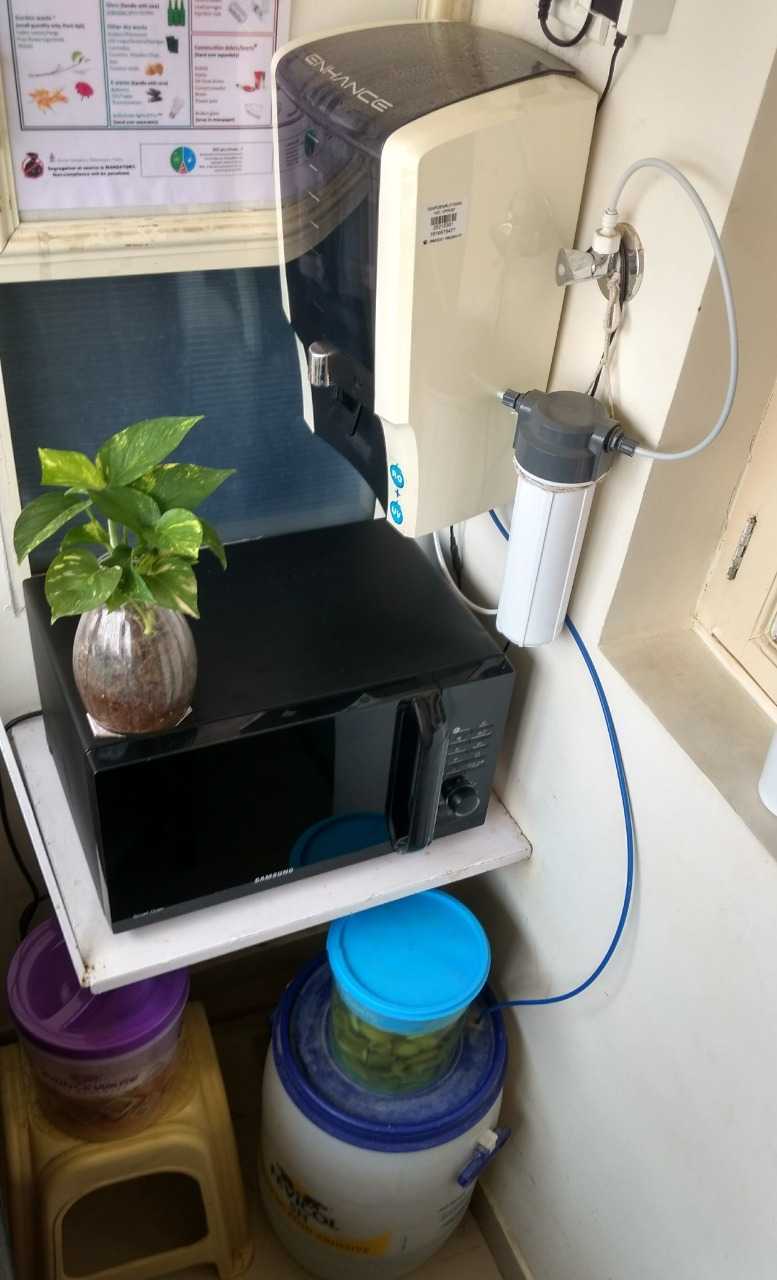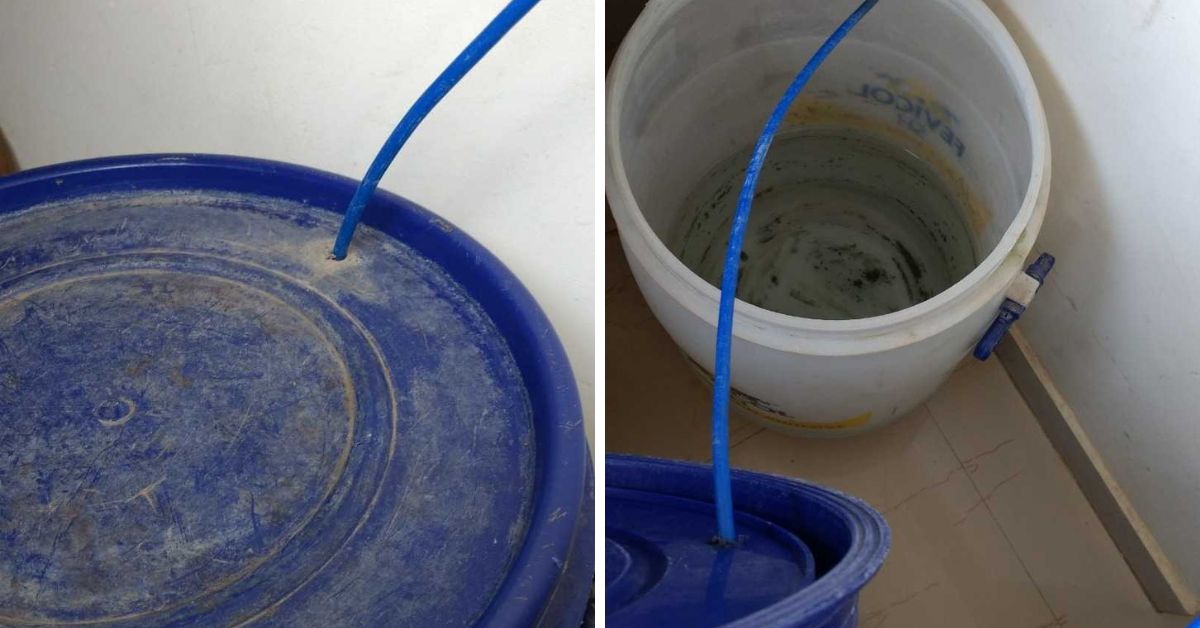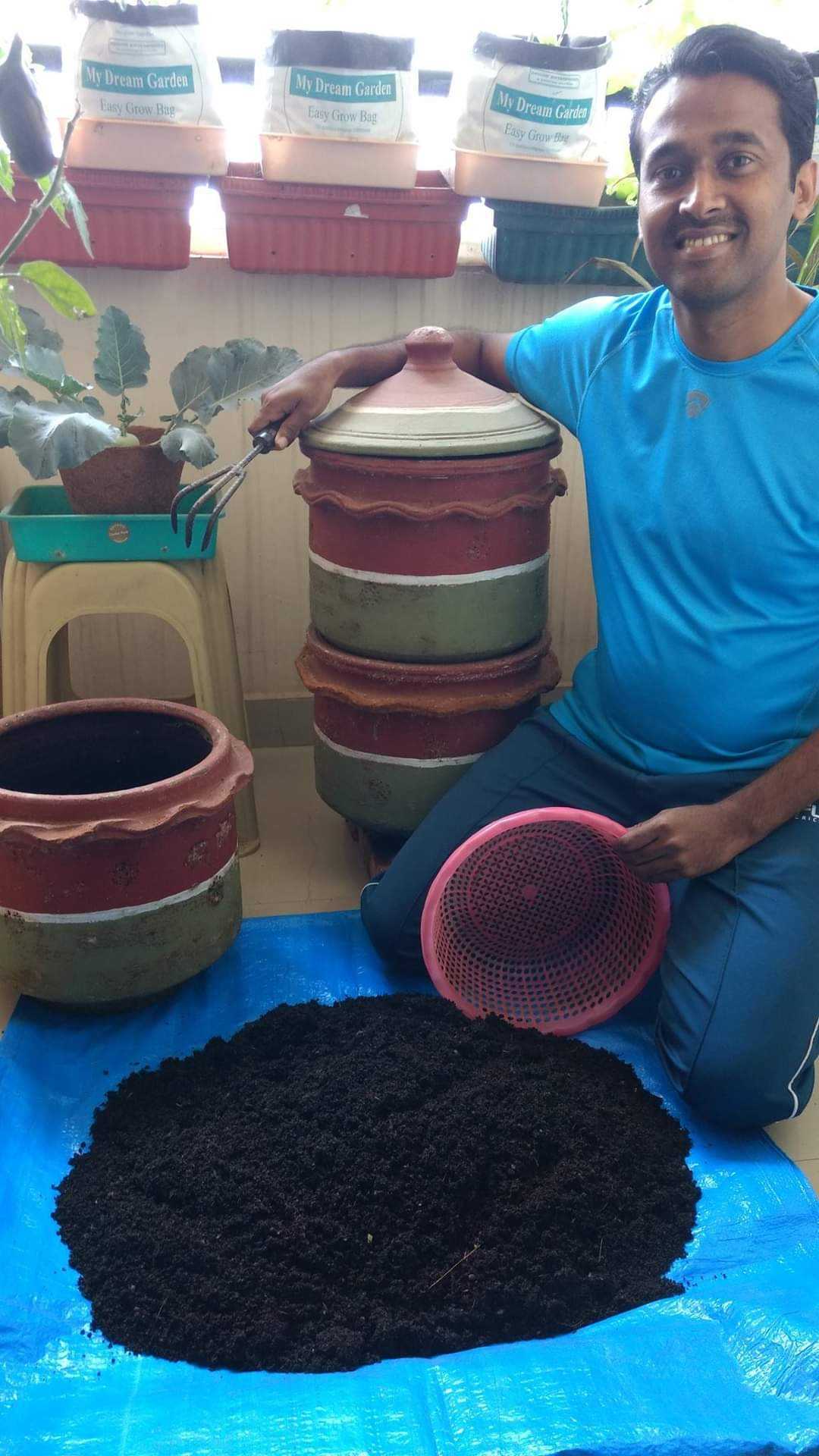How a Simple Setup for RO Discharge Helped Me Save Over 40 Tankers of Water
Wondering how to reuse waste water from your RO filter? Bengaluru's Prabhath Vijayan has installed a simple set up in his flat that lets him easily use it for other household purposes.

Bengaluru resident Prabhat Vijayan has made a simple system to reuse the discharge water from his RO water purifier at home. With this, he collects and reuses the water for several household purposes, and says that he ends up saving 24,000 litres of water a year.
What is reverse osmosis?
Reverse osmosis is a process of water purification that uses a semi-permeable membrane (synthetic lining) to filter out unwanted molecules and large particles — contaminants and sediments like chlorine, salt and dirt, as well as unseen microorganisms in water.
Prabhat says ROs use reverse osmosis to purify water, and for every 5 litres, they give 1 litre of purified water, and 4 litres of wastewater.

A trick to save both money and water
In 2014, Prabhath, who works as a team manager in Manyata Techpark, moved with his family to their new flat in Horamavu. He says their location is dependent on tankers for clean drinking water, and the borewells for other water needs.
“I have always been conscious about addressing water depletion and how it can be dealt with — maybe because I grew up in Alleppey [Kerala], a place surrounded by plenty of water, and suddenly moved to Bengaluru, a city where we pay for every drop,” the 45-year-old tells The Better India.
“When we moved to our new building, I had the chance to discuss methods of storing and reusing wastewater from a regular RO setup with other residents. I also happened to read about it in a social group that was discussing methods to save natural resources in households,” he recalls.
“Unlike most Bengalureans, we don’t get access to Cauvery water, as we live far from the central city. We were all worried about the availability of water throughout the year. A few of us decided to set up a system to save water from RO purifiers in our respective flats,” he explains.
For this, Prabhath found an unused 50-litre drum and placed it in a 2 sq-ft utility area of his house. Using a screwdriver, he dug a hole in it to put in the discharge pipe from the RO. After the drinking water is filtered, the wastewater left behind is collected in the drum and used for household purposes like washing, cleaning, outdoor gardening, etc.

He notes, “The ground water level in the city is depleting every year. It is our responsibility to minimise this. When too many RO purifiers are set up in the same area, especially in bigger apartment communities, the water wastage is higher, unless the wastewater discharge is put to use somehow. This can be used for floor mopping, first wash of utensils, toilet flush and first round during car wash.”
“Around 2014, the water hardness level in our area was around 600 ppm [parts per million]. Now the water we get is 800 ppm. The water levels are below 1,000 feet. One tanker of water costs a minimum of Rs 1,000, and by installing an RO, we have saved more than 40 tankers worth of water, and thereby, the expense,” he explains.

He says that RO purifiers discharge about 65 litres of wastewater every day. So with his system, he adds, he saves 24,000 litres of water every year, which is the minimum usage of a three-to-four-member family.
He says that a minimal setup requires only a drum, which costs Rs 300-500. “I save about six tankers worth of water every year, so the setup saves us plenty of money too.”
Prabhath also maintains a composting setup and a small balcony garden. “We also take special care to segregate and compost waste. The same compost is used for the plants in my balcony garden. These are all the little things we can do to catapult change,” he says.
Edited by Divya Sethu
If you found our stories insightful, informative, or even just enjoyable, we invite you to consider making a voluntary payment to support the work we do at The Better India. Your contribution helps us continue producing quality content that educates, inspires, and drives positive change.
Choose one of the payment options below for your contribution-
By paying for the stories you value, you directly contribute to sustaining our efforts focused on making a difference in the world. Together, let’s ensure that impactful stories continue to be told and shared, enriching lives and communities alike.
Thank you for your support. Here are some frequently asked questions you might find helpful to know why you are contributing?


This story made me
-
97
-
121
-
89
-
167











